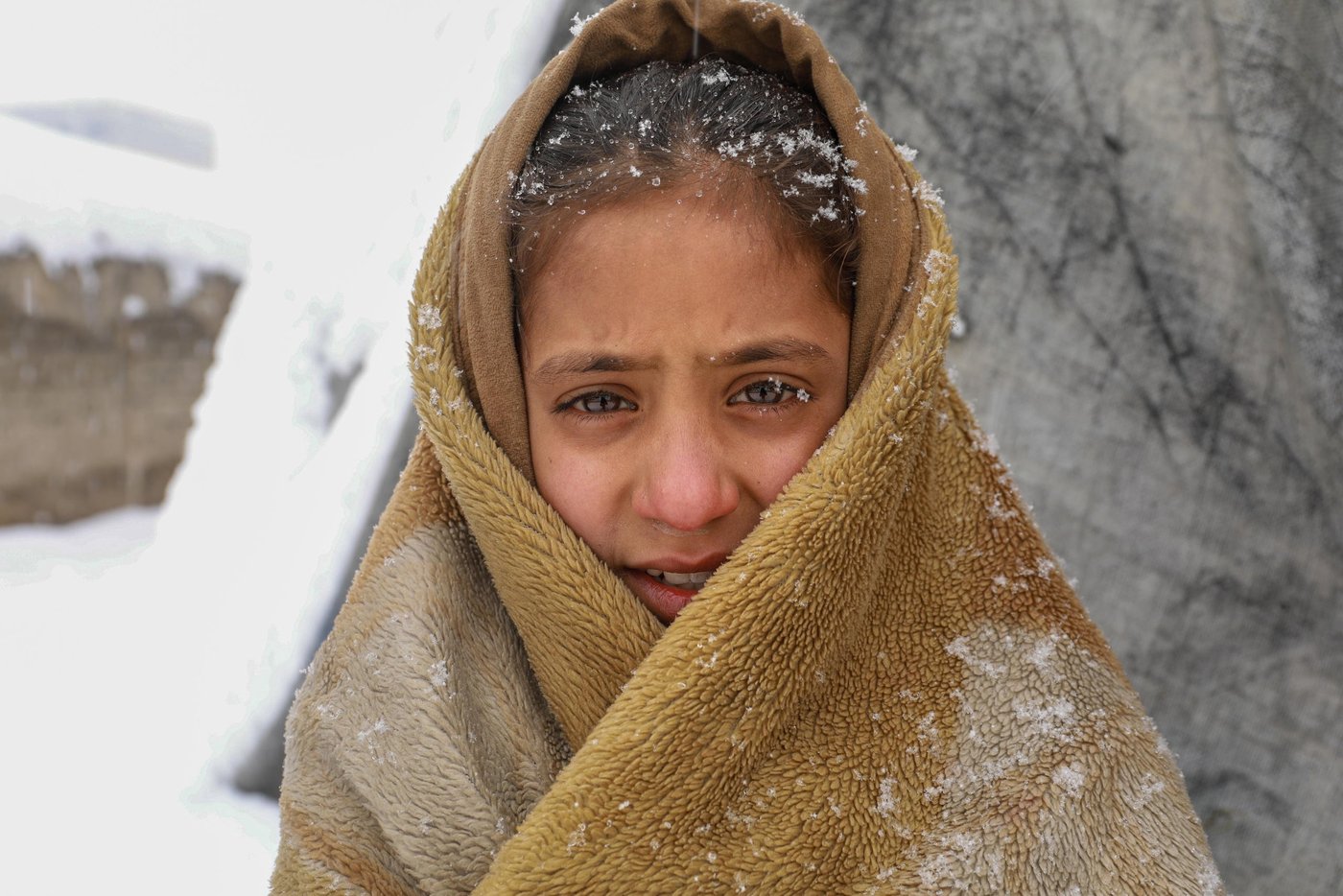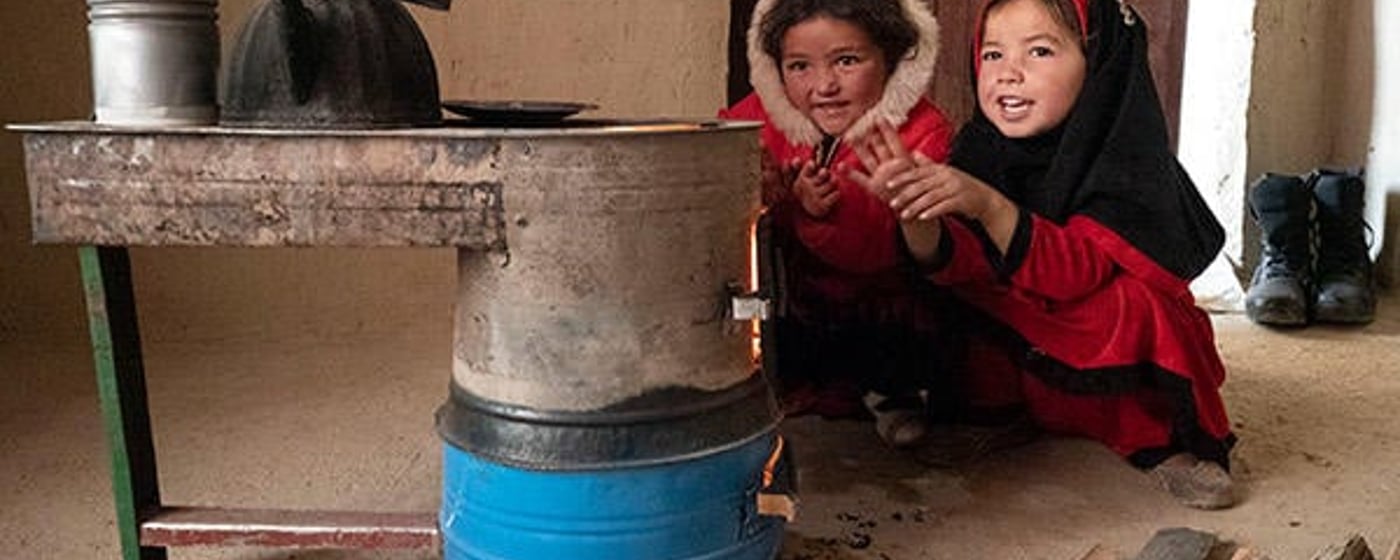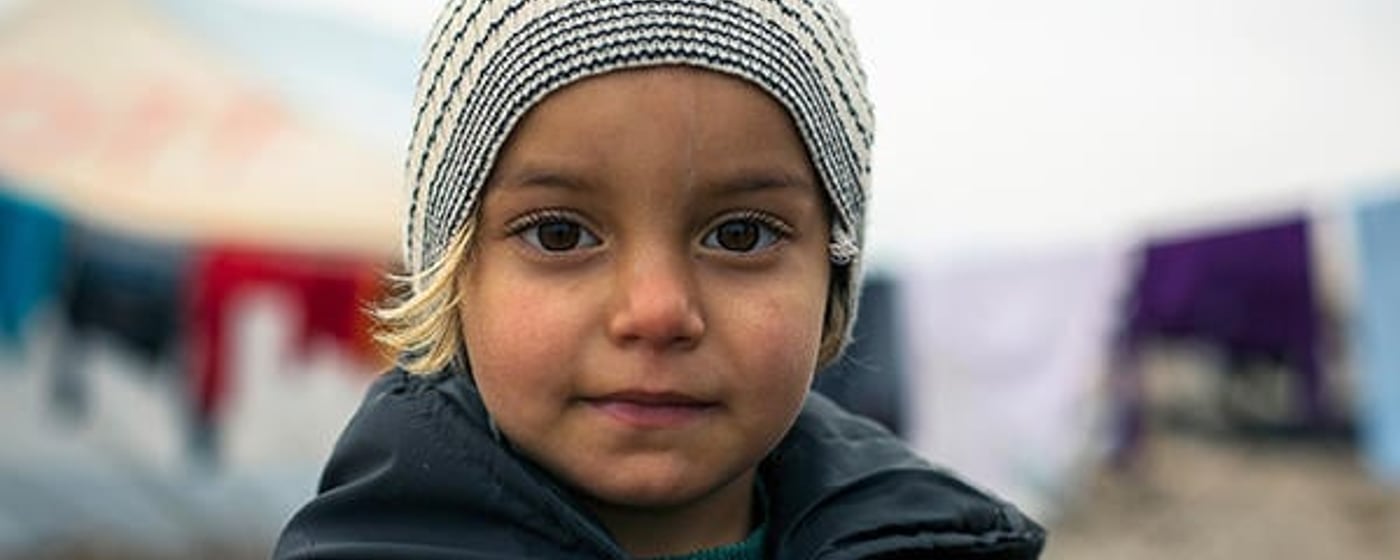Wir treffen die elfjährige Raqia früh morgens nach einer klirrend kalten Nacht mit starkem Schneefall und Temperaturen von -16 Grad Celsius. Eine weiße Schneedecke hat sich über die Zelte von Hiwadwal gelegt – einer Zelt- und Hüttenstadt am Rande der Hauptstadt Kabul. Es ist nur eine von vielen solcher Siedlungen in Kabul.
Im vergangenen Jahr baute NRC Flüchtlingshilfe 154 neue Häuser und rüstete die Häuser von 330 weiteren binnenvertriebenen Familien in und um die Hauptstadt Kabul auf. Einige dieser Häuser befinden sich in der Siedlung Hiwadwal.
Die meisten Familien, die hier leben, wurden durch den Konflikt vertrieben. Manche sind erst vor Kurzem angekommen, während andere seit Jahren hier leben. Manche flüchteten ins benachbarte Pakistan, kehrten in ihre Heimat zurück und mussten dann erneut fliehen.
Zwei Drittel aller Vertriebenen haben in den regionalen Hauptstädten wie Kabul, Nangarhar, Kandahar, Balkh und Herat Zuflucht gesucht.
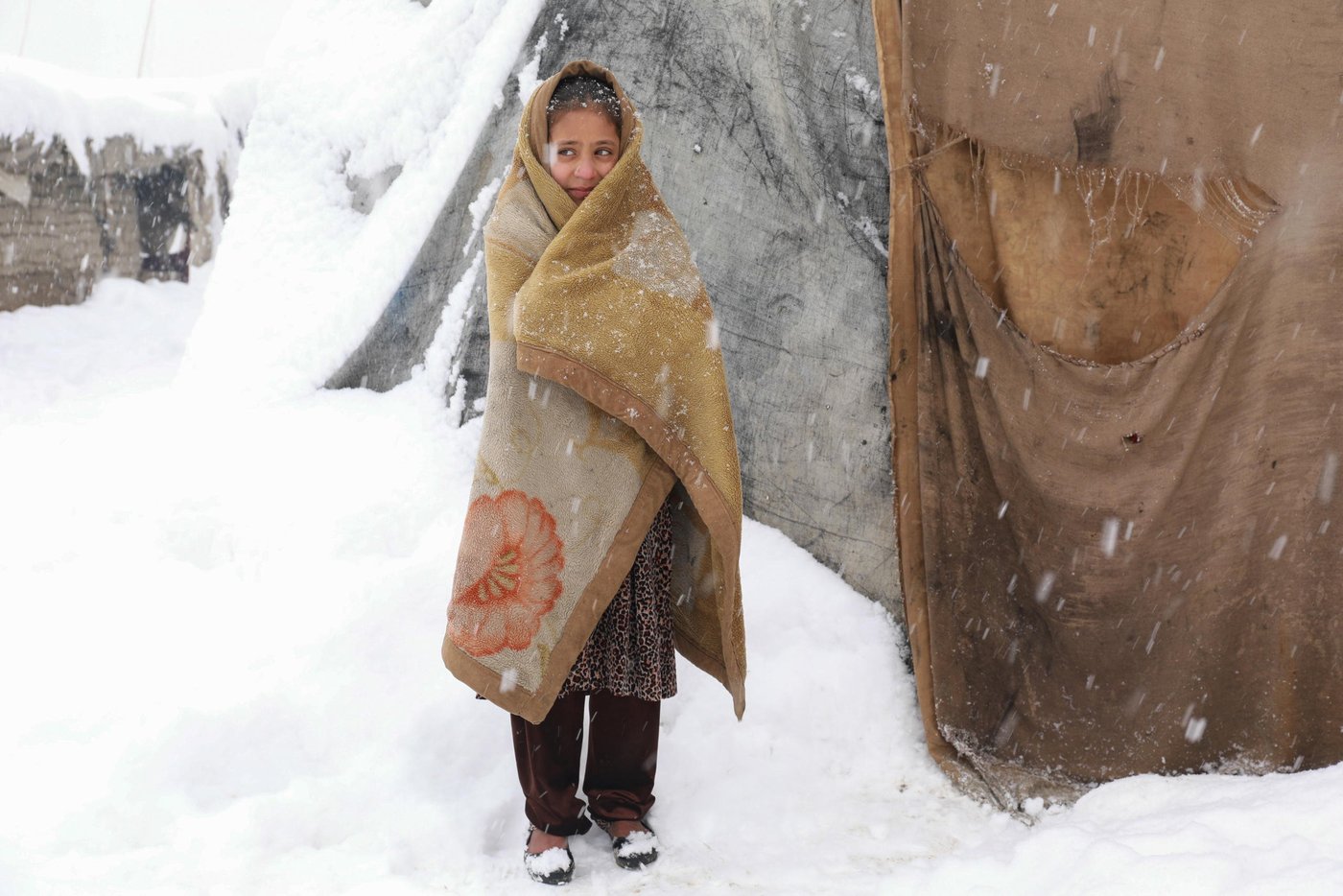
„Dies sind die einzigen Kleidungsstücke und Schuhe, die ich habe“, sagt sie und zieht die Decke enger um sich.
Raqia steht vor der einfachen Behausung ihrer Familie, in eine Decke gewickelt. Darunter trägt sie dünne Sommerkleidung und an den Füßen lediglich ein Paar Plastiksandalen – ohne Socken.
Über 1,2 Millionen Binnenvertriebene in ganz Afghanistan leben in Zelt- und Hüttenstädten, sogenannten inoffiziellen Siedlungen. Über die Hälfte sind Kinder unter 18.
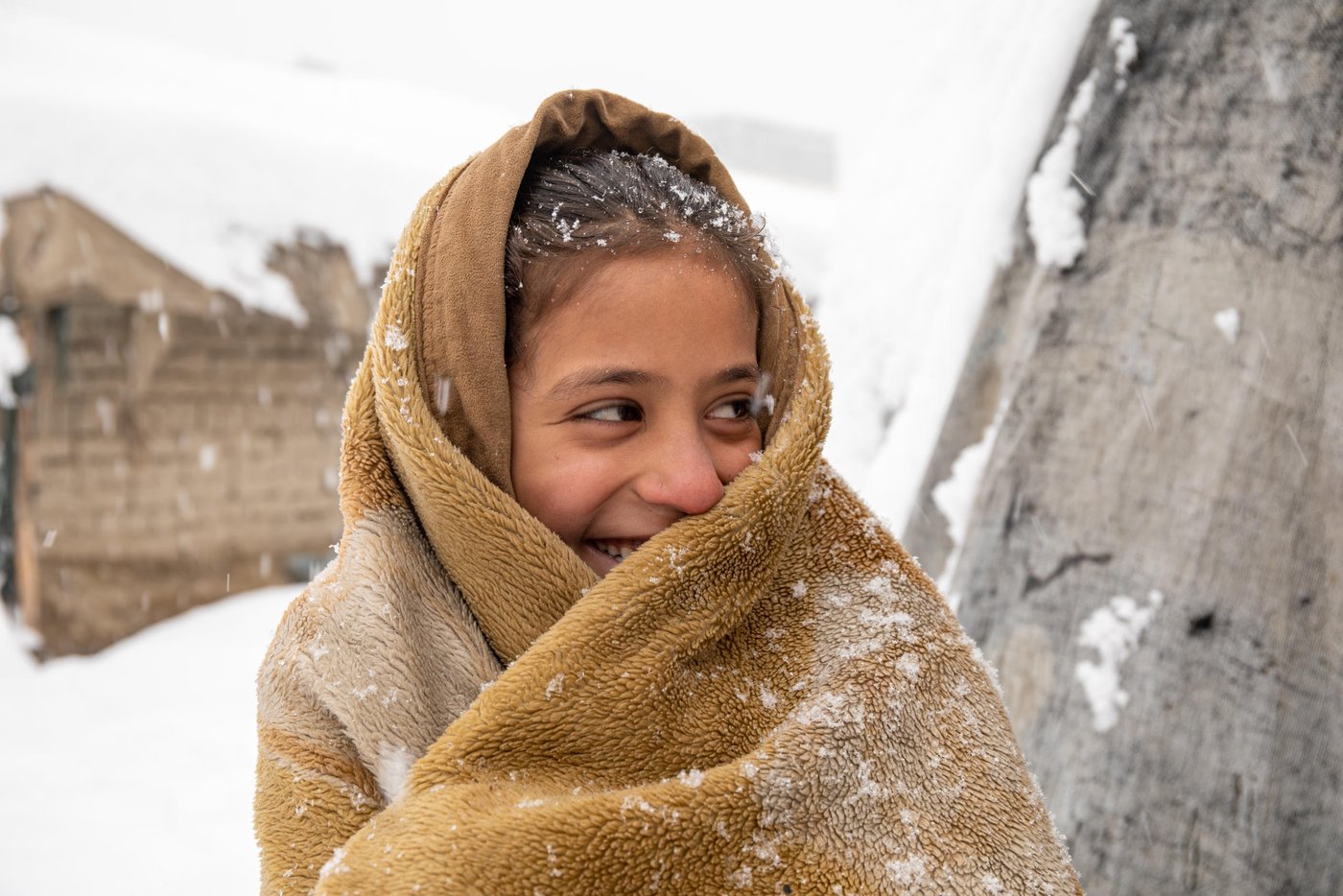
Ihr bescheidenes Heim besteht aus Plastik, Planen, Teppichen und Lehm. „Wir haben einen einfachen Ofen, aber kein Brennmaterial. Wir verbrennen Pappe und Plastik, das wir im Sommer gesammelt haben, aber das reicht nicht, um es warmzuhalten. Wir feuern den Ofen normalerweise einmal am Tag an, aber wenn es so kalt ist wie jetzt, zünden wir ihn auch oft zweimal an.“
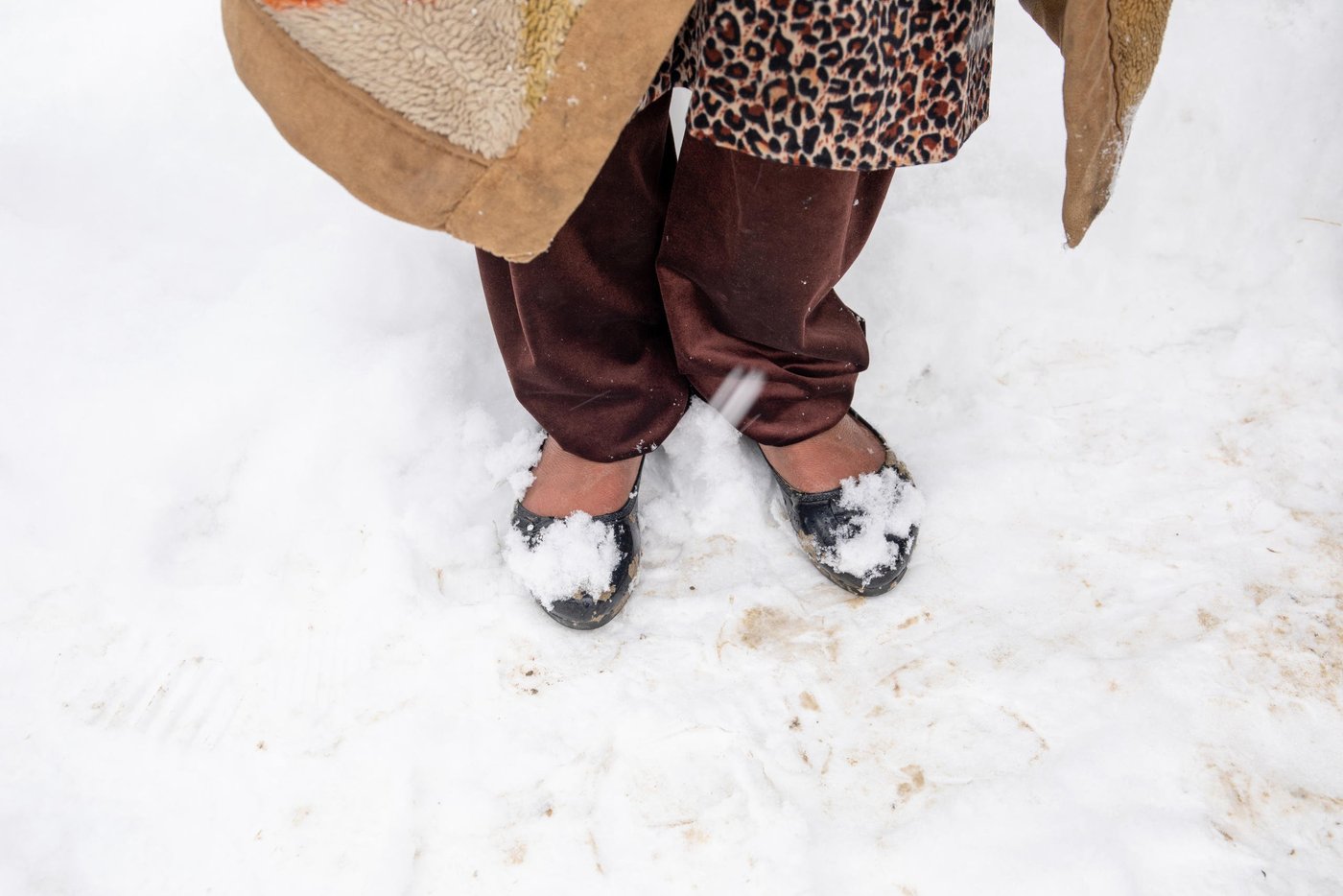
Sobald die Wärme des Ofens nachlässt, wird es eiskalt. „Nachts ist es sehr kalt und ich wache früh auf, weil ich so friere. Meine Füße sind wie Eis und manchmal habe ich kein Gefühl mehr in den Zehen“, sagt sie und blickt auf ihre eiskalten Füße.
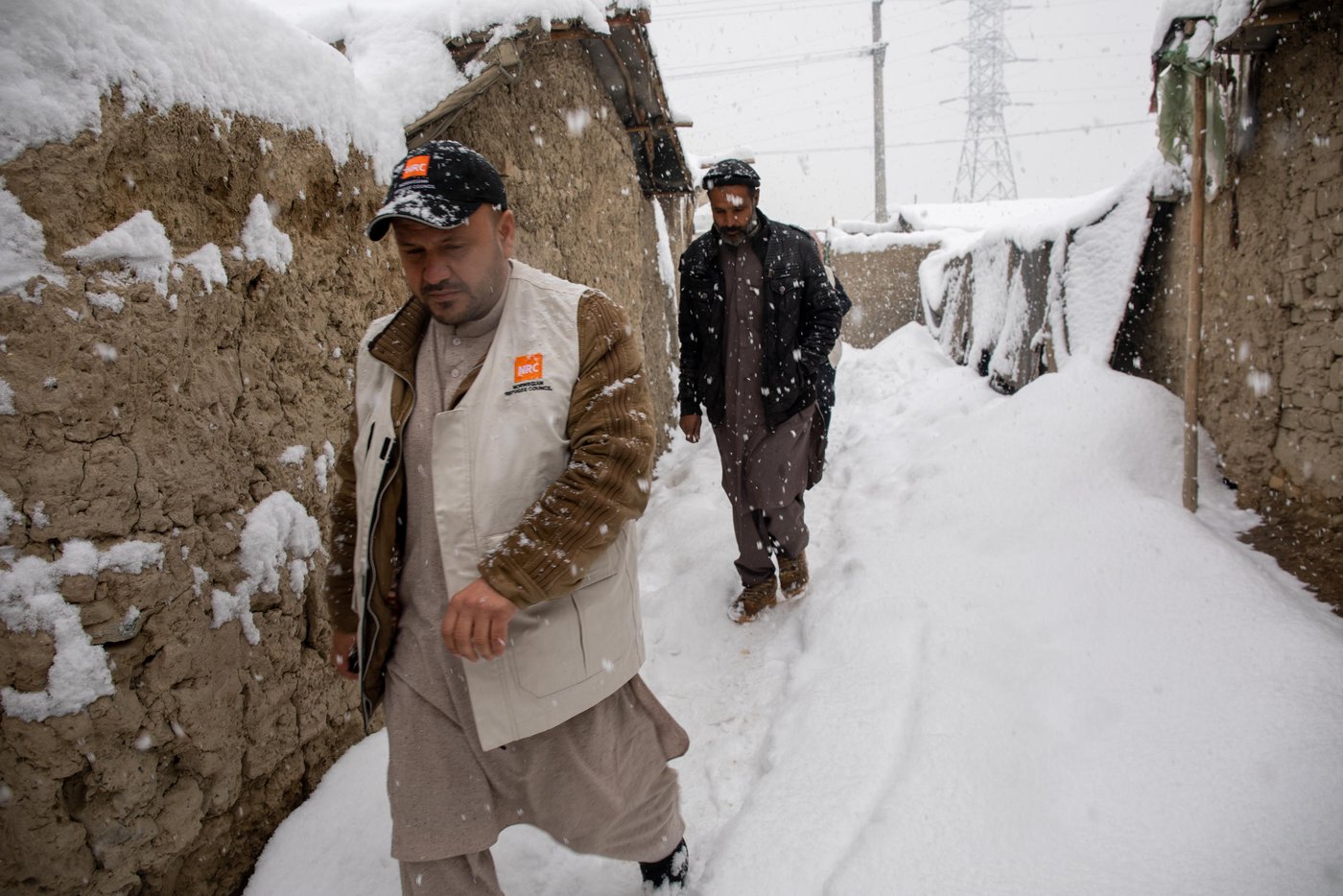
Nach heftigen Schneefällen und Temperaturen nahe -20 Grad sind viele Zelte und Häuser in diesen Siedlungen zusammengebrochen. NRC Flüchtlingshilfe schickte ein Team in die Siedlungen, um sich einen Überblick über die Schäden und den vorhandenen Bedarf zu verschaffen.
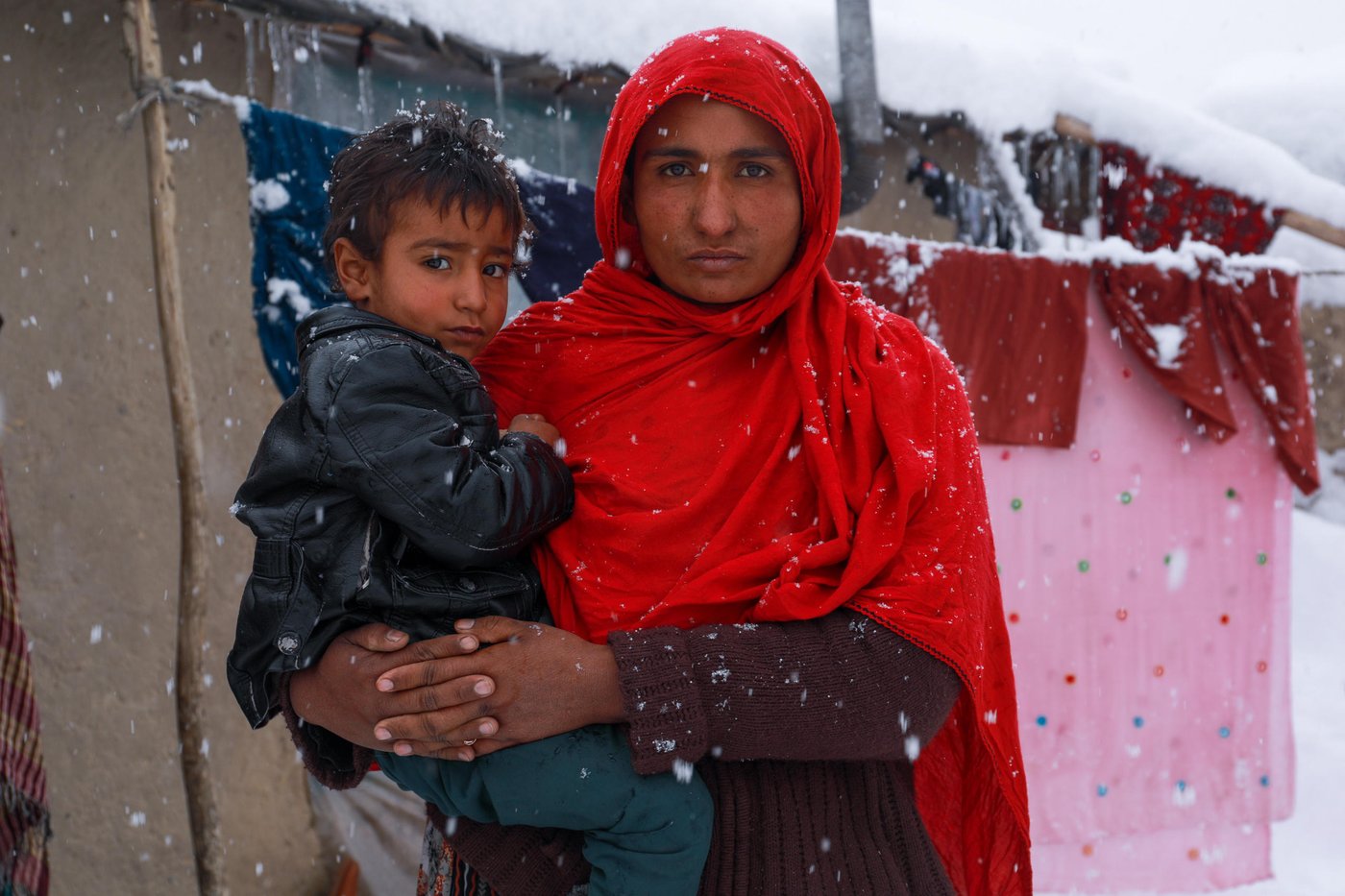
Das Team trifft auf Shanaz, 34, Witwe und dreifache Mutter. „Ich schlief mit meinen drei Kindern, als das Dach plötzlich über uns zusammenbrach. Zum Glück wurde niemand verletzt. Ich rief um Hilfe und kurz darauf kam ein Nachbar, um uns zu helfen“, sagt sie.
„Gott sei Dank sind wir am Leben und haben gute Nachbarn. Sie haben uns aufgenommen, obwohl sie kaum Platz haben. Die Kinder und ich wohnen nun mit drei weiteren Familien in einem kleinen Zweizimmerhaus.“
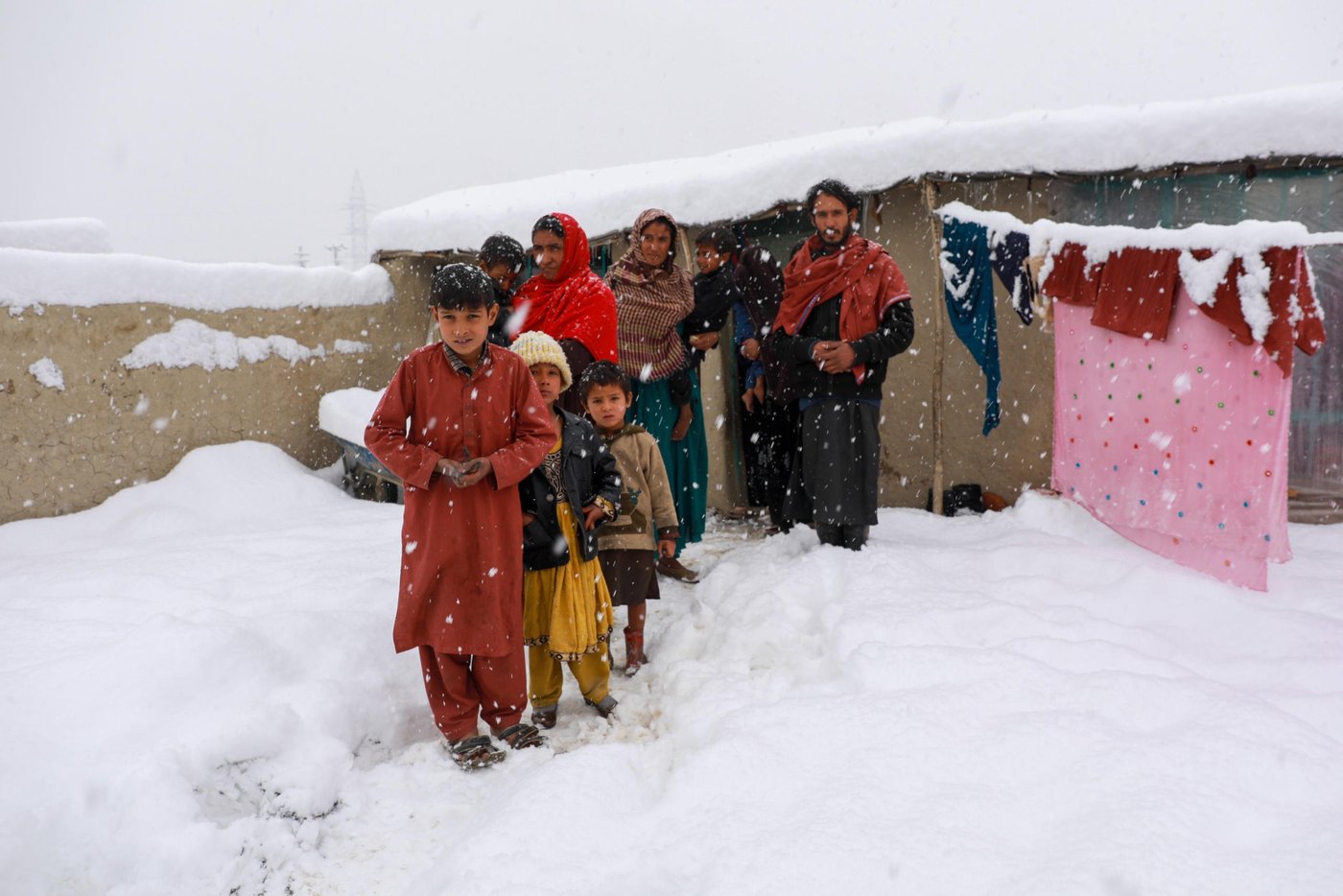
Shanaz bettelt in Kabul auf der Straße um Essen für sich und ihre drei Kinder. Jetzt hat sie noch eine weitere Herausforderung zu bewältigen.
„Unsere zwei größten Probleme waren Nahrung und die Kälte. Jetzt kommt zu der Liste noch das fehlende Dach über dem Kopf dazu.“
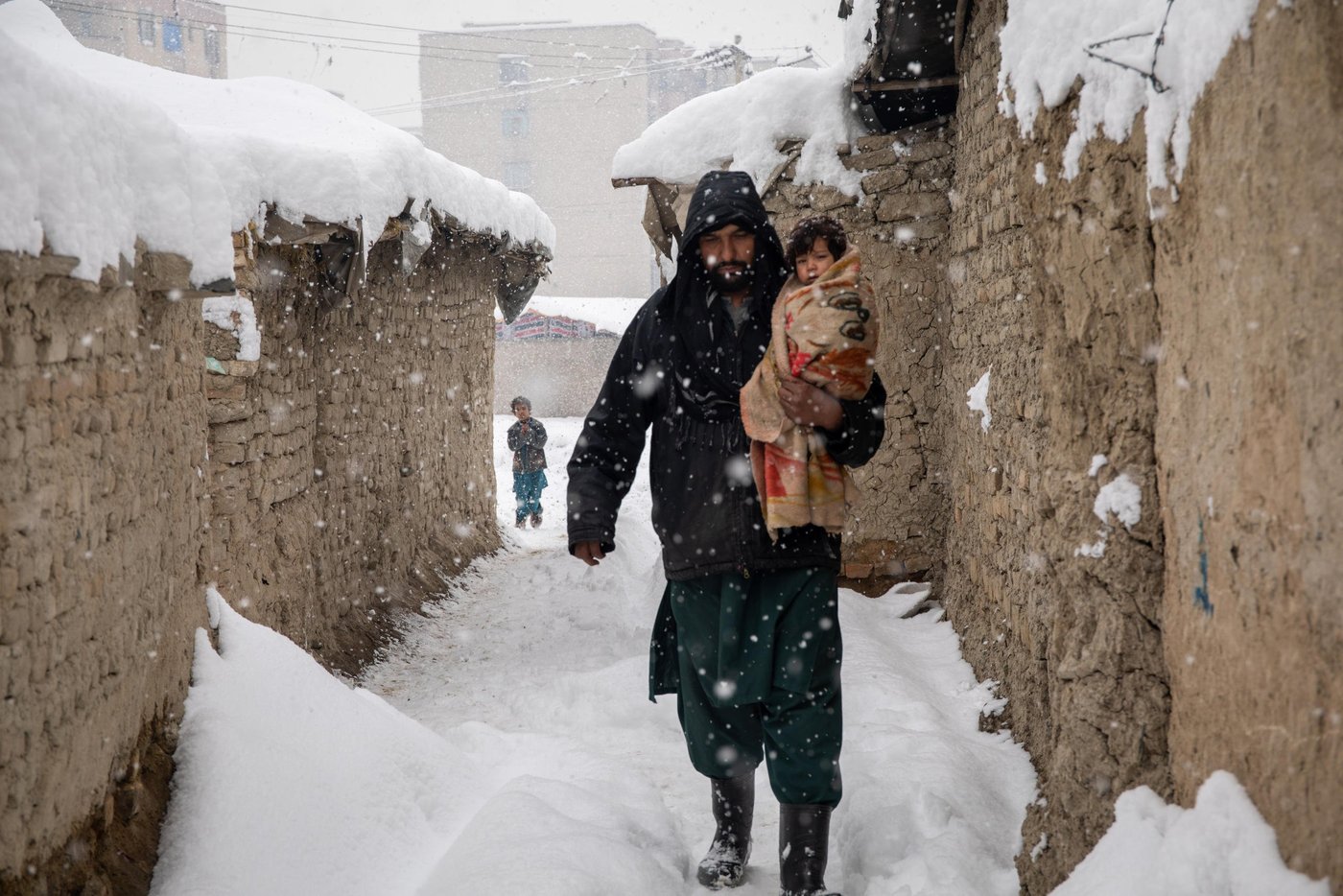
Dann treffen wir Mirwais, 42. Er ist mit seinem anderthalbjährigen Sohn Ramin auf dem Weg zum Arzt. Er hat seit drei Tagen Fieber, Kopf- und Bauchschmerzen.
„Ich hatte die Hoffnung, dass die Schmerzen nachlassen würden und dass ich ihn nicht zum Arzt bringen müsste. Ich habe kein Geld für Medikamente und es ist in diesem Winter schon das zweite Mal, dass ich eins unserer Kinder zum Arzt bringen muss.“
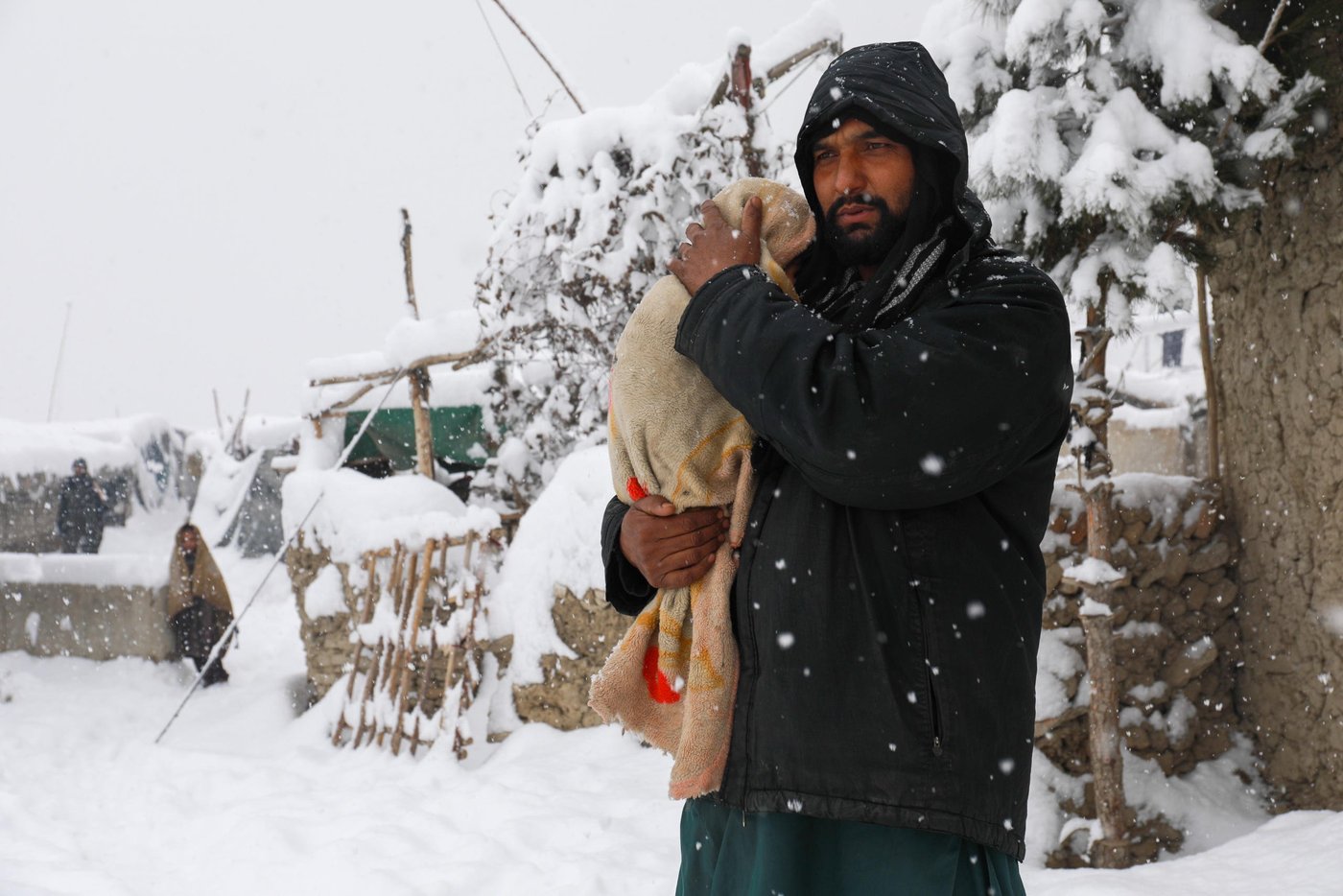
Insgesamt haben 30 Prozent der Afghaninnen und Afghanen keinen Zugang zu grundlegendster medizinischer Versorgung. Diejenigen, die in den am stärksten betroffenen Gebieten leben, in denen der humanitäre Zugang erschwert ist, leiden am meisten.
Mirwais sorgt sich um seine Kinder. „Wir können uns kein Brennmaterial oder Feuerholz leisten, um unser Haus zu heizen oder zu kochen. Das Einzige, was wir haben, ist Plastik und Pappe. Das zu verbrennen ist hochgiftig und macht die Kinder krank“, sagt er, während der durch die Schneewehen zum Arzt eilt.
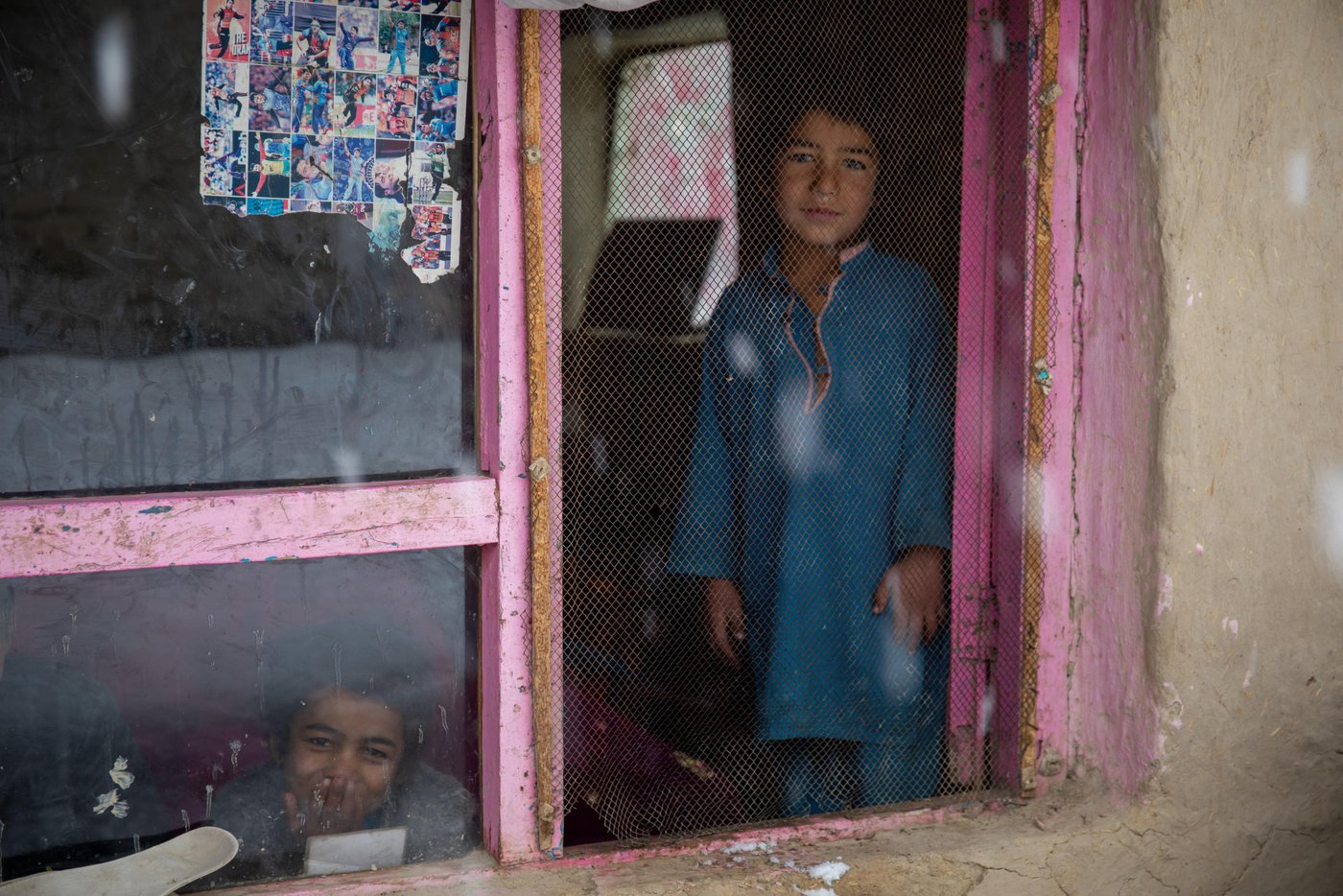
Im selben Viertel treffen wir den sechsjährigen Shawan. Den vergangenen Winter verbrachte er ebenfalls in einer Unterkunft aus Plastik, Teppichen und Lehm. Shawans Familie gehörte zu denen, deren Häuser von NRC Flüchtlingshilfe aufgebessert wurden.
„Jetzt müssen wir nicht mehr frieren und haben es drinnen warm“, sagt er und winkt uns durch das Fenster des neuen Hauses zu.
Nach den jüngsten Schneefällen stellt unser Team fest, dass viele dieser Häuser nun mehr als eine Familie beherbergen.
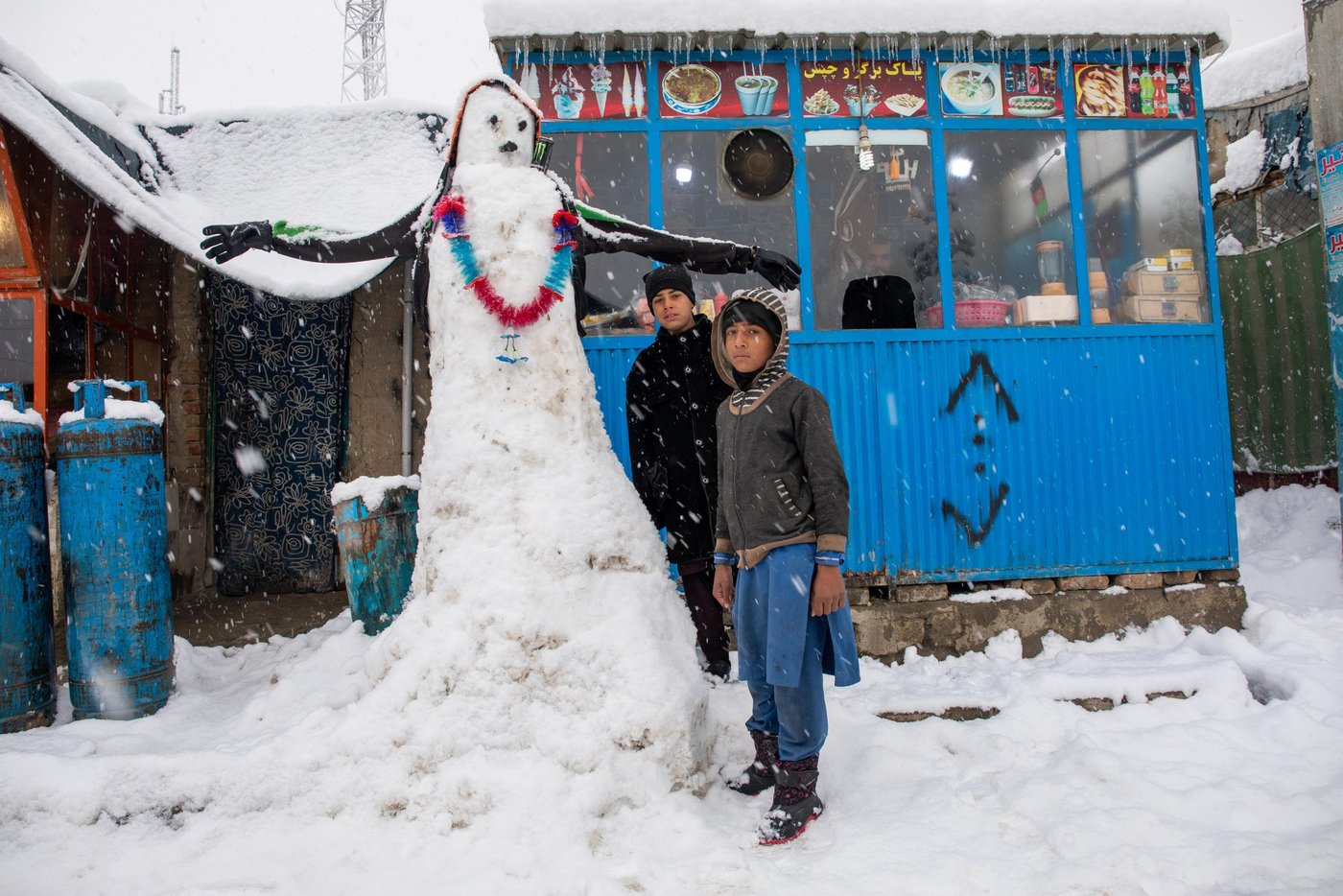
Obwohl die Kinder in den Siedlungen rund um Kabul viele Sorgen haben, sind sie wie die meisten Kinder. Trotz der Tatsache, dass Kälte und Schnee Not und Leid verursachen, finden sie im Alltag Freude. Vor einem kleinen Laden haben zwei Jungen einen Schneemann gebaut. Für den Moment ist der Spaß, den sie im Schnee haben, alles, was zählt.


